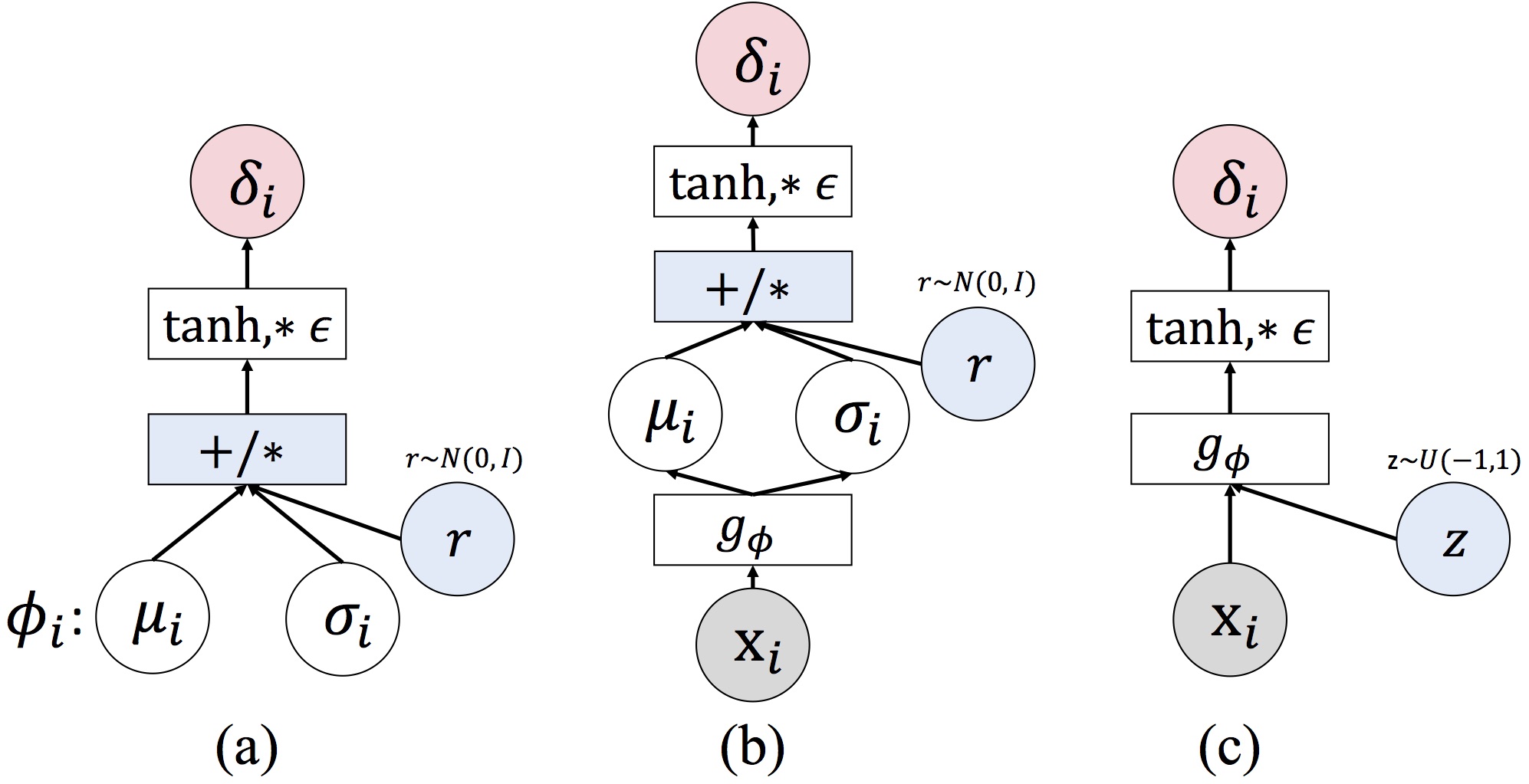This repository contains the code for adversarial distributional training (ADT) introduced in the following paper
Adversarial Distributional Training for Robust Deep Learning (NeurIPS 2020)
Yinpeng Dong*, Zhijie Deng*, Tianyu Pang, Hang Su, and Jun Zhu (* indicates equal contribution)
If you find our methods useful, please consider citing:
@inproceedings{dong2020adversarial,
title={Adversarial Distributional Training for Robust Deep Learning},
author={Dong, Yinpeng and Deng, Zhijie and Pang, Tianyu and Su, Hang and Zhu, Jun},
booktitle={Advances in Neural Information Processing Systems},
year={2020}
}
Adversarial distribution training (ADT) is a new framework to train robust deep learning models. It is formulated as a minimax optimization problem, in which the inner maximization aims to find an adversarial distribution for each natural input to characterize potential adversarial examples; and the outer minimization aims to optimize DNN parameters with the worst-case adversarial distributions.
In this paper, we proposed three different approaches to parameterize the adversarial distributions, as illustrated below.
Figure 1: An illustration of three different ADT methods, including (a) ADTEXP; (b) ADTEXP-AM; (c) ADTIMP-AM.
- Python (3.6.8)
- Pytorch (1.3.0)
- torchvision (0.4.1)
- numpy
We have proposed three different methods for ADT. The command for each training method is specified below.
python adt_exp.py --model-dir adt-exp --dataset cifar10 (or cifar100/svhn)
python adt_expam.py --model-dir adt-expam --dataset cifar10 (or cifar100/svhn)
python adt_impam.py --model-dir adt-impam --dataset cifar10 (or cifar100/svhn)
The checkpoints will be saved at each model folder.
- For FGSM attack, run
python evaluate_attacks.py --model-path ${MODEL-PATH} --attack-method FGSM --dataset cifar10 (or cifar100/svhn)
- For PGD attack, run
python evaluate_attacks.py --model-path ${MODEL-PATH} --attack-method PGD --num-steps 20 (or 100) --dataset cifar10 (or cifar100/svhn)
- For MIM attack, run
python evaluate_attacks.py --model-path ${MODEL-PATH} --attack-method MIM --num-steps 20 --dataset cifar10 (or cifar100/svhn)
- For C&W attack, run
python evaluate_attacks.py --model-path ${MODEL-PATH} --attack-method CW --num-steps 30 --dataset cifar10 (or cifar100/svhn)
- For FeaAttack, run
python feature_attack.py --model-path ${MODEL-PATH} --dataset cifar10 (or cifar100/svhn)
First change the --white-box-attack argument in evaluate_attacks.py to False. Then run
python evaluate_attacks.py --source-model-path ${SOURCE-MODEL-PATH} --target-model-path ${TARGET-MODEL-PATH} --attack-method PGD (or MIM)
python spsa.py --model-path ${MODEL-PATH} --samples_per_draw 256 (or 512/1024/2048)
We have provided the pre-trained models on CIFAR-10, whose performance is reported in Table 1. They can be downloaded at
- ADTEXP: http://ml.cs.tsinghua.edu.cn/~yinpeng/downloads/ADT-models/adt-exp.pt
- ADTEXP-AM: http://ml.cs.tsinghua.edu.cn/~yinpeng/downloads/ADT-models/adt-expam.pt
- ADTIMP-AM: http://ml.cs.tsinghua.edu.cn/~yinpeng/downloads/ADT-models/adt-impam.pt
Yinpeng Dong: dyp17@mails.tsinghua.edu.cn
Zhijie Deng: dzj17@mails.tsinghua.edu.cn
